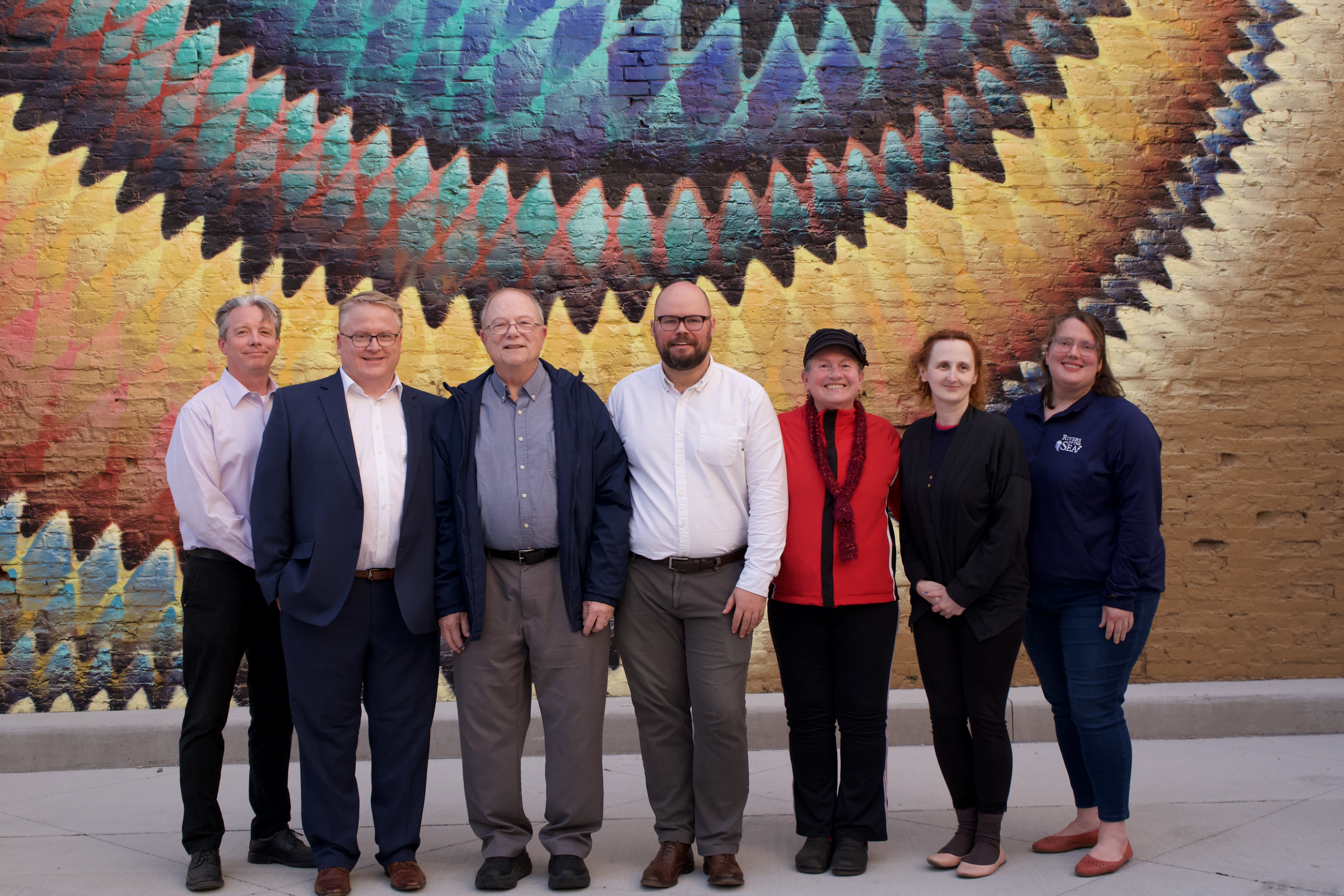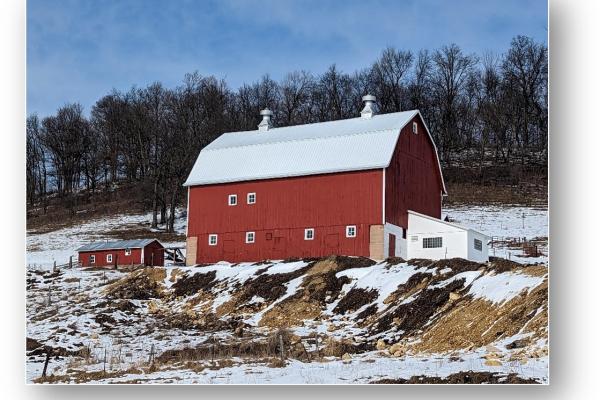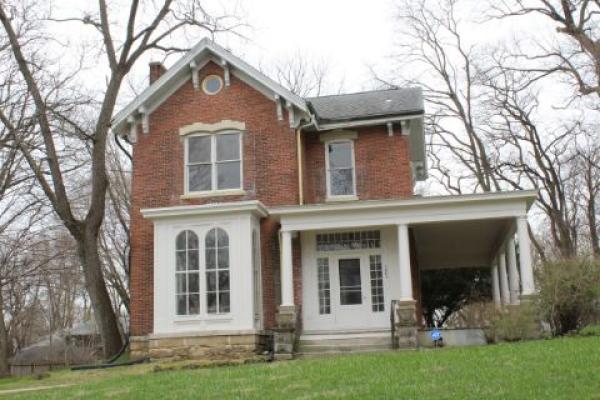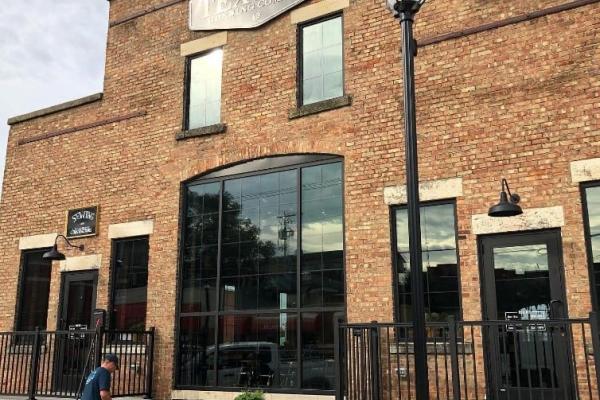The annual Historic Preservation Awards are given by the Dubuque County Historical Society in partnership with the Dubuque County Historic Preservation Commission.
The awards are announced as part of Dubuque Main Street’s Architecture Days programming. The awards recognize exterior preservation and restoration of properties throughout Dubuque County.
Presented annually since 1975, only the most recent year of awardees is on this page. For information on previous awards, contact info@rivermuseum.org.

Members of the Historic Preservation Awards Committee: Left to Right Jason Neises, Duane Hagerty, Mike Gibson, Bill Doyle, Cinda Welu, RRS Stewart, and Emma Sundberg
Eligibility
Eligible historic properties must be located within Dubuque County. Properties should be at least 50 years old and are reviewed on criteria such as exterior construction materials; fenestration (windows); architectural details appropriate to the original design of the building; compatibility of the color scheme; alterations or additions to the structure; and appropriateness of the surrounding grounds to the original design of the building.
Property owners can nominate their own buildings, or nominations can be submitted on behalf of neighbors, friends, and others who have researched and thoughtfully restored historic property.
The winning properties are honored at an awards ceremony as part of Dubuque Main Street’s annual Architecture Days celebration.
Nomination Process
To nominate a property for an award, complete the electronic form below or mail nomination content to the Historic Preservation Awards, Dubuque County Historical Society, 350 E. 3rd St., Dubuque, Iowa 52001. For questions, email info@rivermuseum.org.
The deadline for 2023 award nominations is February 29, 2024.
Nominations after this date will be considered for the 2024 awards.
Award Winners
2023
Frank May Brewery: Brian Bock and Jeff Geistkemper

Frank May Brewery in Cascade, Iowa was built in 1878. A solid limestone building with walls that are over 16 inches thick throughout, the building was purchased by Geoff Zoller a decades ago. There was consideration of tearing it down to build a new library, but he did not that want to happen. It mostly sat vacant for a couple of decades, being used only as a storage facility, and the front was a food pantry. After purchasing the building and looking at historical documents about the construction of the building, there was mention of an underground beer vault that measured 22 x 88 with 12-foot ceilings. Initially, there was no indication this beer vault existed, but after removing 50 tons of sand, the beer vault that had been covered up for 100 years was once again accessible, allowing it to be viewed for the first time in decades.
The limestone building is still a very solid structure. It has been cleaned and tuckpointed where needed. All new windows have been installed that matched the original design of the ones that were removed. A new steel roof was put on, as well, as the underlying shake style roof would have been too cost prohibitive to replace.
Inside, the hardwood floors have been sanded and refurbished, creating beautiful floors in the apartments. An old lean-to addition was removed and replaced with a new foundation and roof, housing the new water system, and creating a secondary access to the basement. The upgraded roof, windows, insulation, electrical, and HVAC will service this building for years to come, preserving a once vacant building into a beautiful multi-use commercial building.
St. Raphael Cathedral - Pastor, Rev. Dennis J. Quint

St. Raphael Parish celebrates 191 years as the “Mother Parish of the Great Northwest.”
In July 1833, Charles Felix van Quickenborne, a Jesuit from St. Louis, arrived in the Dubuque area. Soon the Catholics of Dubuque sent a petition to Bishop Joseph Rosati of St. Louis, to have a church built in Dubuque. Rev. Charles F. Fitzmaurice was appointed pastor to the area in May of 1834, but died before a Dubuque church could be built.
In July 1835, Rev. Samuel Mazzuchelli, a Dominican priest, laid the foundation for a stone church that was dedicated to Raphael, the Archangel. With the appointment of Mathias Loras as the first Bishop of Dubuque, the stone church became a cathedral.
In 1843, the Sisters of Charity (BVM) were the first women religious to arrive to staff a school built on the Cathedral property. At the invitation of the bishop, many religious communities made Dubuque their home.
In 1857, in response to the rapid growth of Dubuque, Bishop Loras made plans to build a much larger Cathedral Church. John Mullany was chosen to draw the plans for the new building – which would be over three times larger than the previous building. Mullany used Magdalen College in Oxford, England as the model for the Cathedral. Work began on land just to the north of the first Cathedral building. The cornerstone was laid on Sunday, July 5, 1857, and was witnessed by a huge gathering.
During this time, the health of Bishop Loras began to fail. Father Clement Smyth – a Trappist Father from the nearby New Melleray Abbey — became the coadjutor to the Bishop of Dubuque and oversaw the building of the new Cathedral. The structure was completed enough for Bishop Loras to offer the first mass in the new building on Christmas Day, 1857, less than two months before his passing.
Exterior work was completed over the past year on the church roof, windows, steeple, bells, and doors. Special care was offered to perform the necessary maintenance in accord with the original appearance of the church. The new metal roof offers wonderful protection yet remains light. The protective glass coverings with vented frames will preserve the stunning stained glass inside. Especially difficult was the work on the steeple. Many people were not aware that the upper portion of the steeple was fabricated from metal. It only had the appearance of the matching stone. Three bells were updated with electronic strikers that now sound on the quarter hours. The Bluff Street doors were stripped and coated. This project was funded by the faithful from all over northeast Iowa in the Archdiocese of Dubuque.
Andrea & Sam Heiderscheit - The Rock House

The Rock House at 104 Fourth Ave NW in Farley, Iowa is believed to have been built around 1850 and is designed as a stone country house similar to old houses found in Normandy, France. It was formerly owned by a French-Canadian couple, Mr. Louis Napoleon Arcouet, a shoemaker originally from Montréal, Quebec and his wife, Marguerite Robillard, originally from Syracuse, New York.
Marguerite was the daughter of a mason and stonecutter, Michael Maxim Robillard who owned the stone quarry in Farley as well as one in Dubuque with his business partner Joseph Arcouet. The stone from the Farley quarry was used to build the house while the stone from the Dubuque quarry was used to build many early buildings in Dubuque including the courthouse, the jail, and St. Rafael’s cathedral. The front of the house served as the shop for shoe and boot making and repairs while the upstairs was a single room.
The Arcouet family added four more rooms to the house, two of which were made of stone, including the parlor downstairs behind the shoe shop and another bedroom upstairs. Mr. and Mrs. Louis N. Arcouet lived at the Rock House in Farley shortly after they were married and raised their five children that grew into adulthood. In total, there had been seven generations of Arcouet and Robillard families that had lived or stayed in the house. The house was sold to the current owners in 2014 who restored it and made substantial improvements to the house.
Renovations on the property began in 2018. The Heiderscheits’ goal was to keep the exterior of the structure as consistent with the original stonework as possible. The couple gutted the interior down to the stone walls and designed the interior rooms to align with the existing structure so as not to change the stonework. Sam and his brother Nick, both masons, tuckpointed the existing structure and completed the stonework on the addition. Part of the stone on the exterior was salvaged from an interior wall we removed; the remaining stone on the addition is from the Farley quarry. Some was purchased split, the remainder was hand-split. The header stone of the fireplace is a window header stone from an interior wall in the original structure. The fireplace mantle is from a piece of floor truss in the original structure. When completing the remodel, the couple was in awe of the amount of natural light in the living room from all of the windows and changed the plans to leave the front portion of the house (living room) open to both stories.
When renovating the front portion of the house, the Heiderscheits found old shoe and shoe repair materials, which are most from some of the original owners.
The Richard Schroder House - 1450 Iowa St.
The Richard Schroder House, located at 1450 Iowa Street, is a Second-Empire-style residence built around 1880. The three story, square plan building features a style-defining mansard roof. The mansard roof was in a compromised condition and had been left partly exposed to the elements. The issues with the roof have been addressed with a sympathetic contemporary roofing material. The building also showcases excellent carpentry features which were repaired and restored – despite their highly ornamental nature and the cost of retaining these elements. These include paneled frieze boards, decorative brackets in the cornices and covering the window hoods, and decorative moldings along the roofline. Much needed attention was also paid to the masonry work which had had long term issues of deterioration and active areas of water infiltration.
The building was historically associated with Richard Schroder, who was a veteran of the Chicago Symphony and was an organizer of the Dubuque Symphony – which was the first symphony in Iowa. He served for more than 50 years on the Loras College faculty and was a noted pianist. It is said that many of the Schoeder family taught music lessons out of the third-level apartment.
This excellent rehabilitation of a building with architectural and historic significance in the Jackson Park historic district was completed by Tom Kelzer and Gary Carner.
Past Awardees

The Lassance Barns
While maps no longer show Millville, the Lassance barns (recognized in 2022) are still there reminding us of this small hamlet once tucked into a valley just north of Epworth. There were once three grist mills along the streams in Millville, two of them on the Lassance farm.

Langworthy House
Langworthy House, built in the late 19th century, was recognized (2021) for maintaining its Italianate character with a wrap-around porch.

Burley Family Home
Built in 1920 by Renwick J. Luke, this home was recognized (2020) for its repainting and incorporation of solar panels that do not detract from its historic nature.

Textile Brewing Company
Built originally in 1906 as the Dyersville Gas Engine Company and later operated as a sewing factory, the building was recognized (2019) for renovations that included replica windows and returning the exterior to its more original form.

